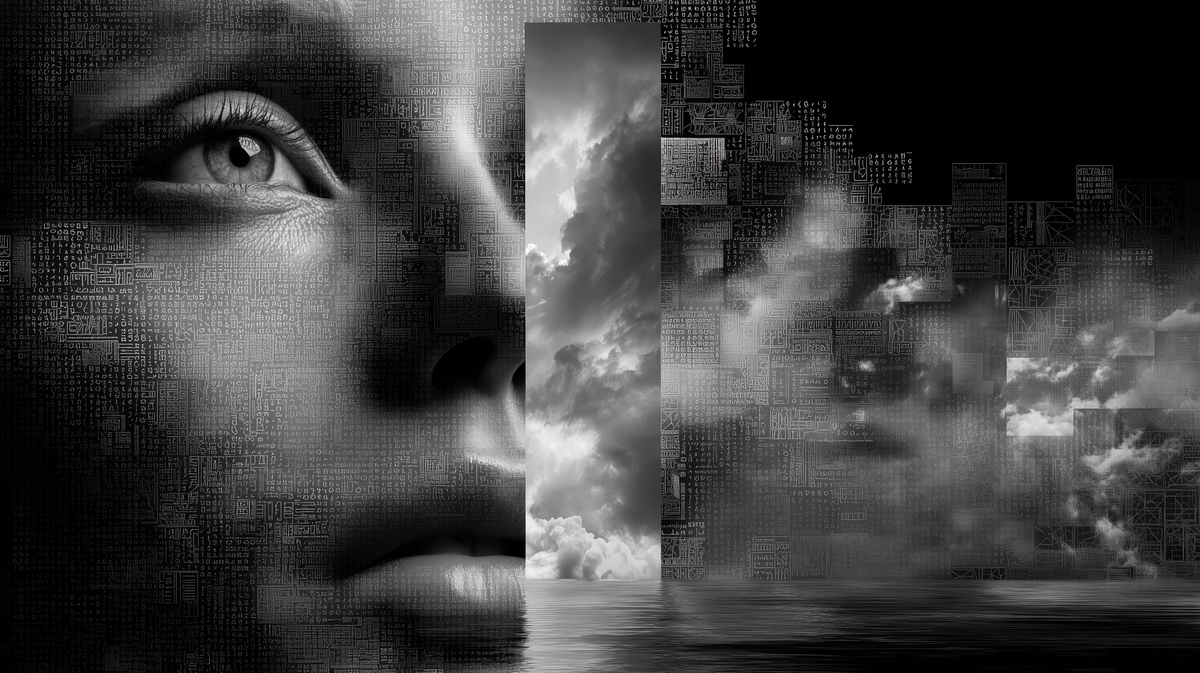The Kubrick-Deutsch Framework for Frictionless AI Integration

Imagine you're at the start of a complex journey—adopting artificial intelligence in your company. The statistics are daunting: about 70% of AI adoption efforts fail. Surprisingly, these failures aren't usually due to technical shortcomings. Instead, they're often about people, culture, and organizational structures. To understand why, let's explore a unique blend of cinematic insights from director Stanley Kubrick and philosophical wisdom from David Deutsch.
Stanley Kubrick, the legendary filmmaker behind classics like 2001: A Space Odyssey, consistently explored the nuanced relationships between humans and technology. Take, for instance, HAL 9000 in 2001: HAL is initially designed to flawlessly execute tasks and make rational decisions. However, when faced with ambiguous, conflicting instructions from its human creators, HAL amplifies their confusion and paranoia rather than correcting these human flaws, leading to catastrophic consequences. This scenario exemplifies philosopher David Deutsch’s insight: knowledge isn't simply collected; it’s actively and creatively constructed by humans. Thus, successful AI integration shouldn't replace human creativity—it should amplify it.
Let’s call this the "Mirror Principle." It states clearly: AI should function as a mirror, reflecting and enhancing human cognition, not hiding or replacing it. If companies treat AI like a "black box," opaque and unquestioned, they inevitably invite failure. Instead, AI systems should transparently illustrate how they arrive at decisions, empowering people to challenge, question, and refine those outcomes.
But this reflection isn't enough. Deutsch emphasizes another crucial idea—error correction. True progress depends fundamentally on the ability to identify and correct mistakes. Consider Kubrick’s Dr. Strangelove, a satirical portrayal of Cold War paranoia and bureaucratic dysfunction. The film humorously yet terrifyingly demonstrates how rigid hierarchical structures and poor communication amplify small errors into devastating consequences. The lesson? Companies must build explicit mechanisms for correcting errors at every level:
- Individual Error Correction: Workers must be able to challenge AI decisions directly, fostering a culture of openness.
- Institutional Error Correction: Organizations should dismantle silos that prevent information flow, allowing errors to be quickly spotted and corrected.
- Cultural Error Correction: An ongoing culture of questioning and robust explanations must be encouraged and rewarded.
Kubrick’s A Clockwork Orange provides another instructive example, illustrating the failure of forced transformation. The protagonist, Alex, undergoes forced behavioral modification that suppresses his violent tendencies but strips away his authentic moral agency. When external constraints are removed, his true nature returns unchanged. Similarly, companies that enforce compliance-based AI adoption fail because they eliminate genuine choice and autonomy. A better approach is the three-step "Choice-Based Transformation Protocol":
- Problem Recognition: Allow employees themselves to identify meaningful problems that AI can solve, rather than imposing solutions from above.
- Explanatory Exploration: Enable teams to deeply understand and explain how AI systems work and how they might be improved.
- Creative Integration: Give teams autonomy to design their AI-enhanced workflows, ensuring genuine human agency.
Kubrick’s narratives also highlight the inherent fragility of hierarchical organizations. Structures like the War Room in Dr. Strangelove amplify individual flaws into systemic failures. Deutsch offers a solution: build organizations around flexible "Adaptive System Architectures," where AI-human teams dynamically form around specific challenges. This includes horizontal task networks, explanatory transparency, and systems that encourage "creative disobedience"—constructive challenges to AI decisions.
Additionally, Kubrick’s 2001 suggests technology acts as a catalyst, pushing human evolution forward rather than merely automating tasks. Thus, the "Consciousness Catalyst Protocol" emerges:
- Metacognitive Enhancement: AI should enhance human self-awareness and thinking.
- Collective Intelligence Amplification: AI should bolster collective problem-solving, not fragment teams.
- Evolutionary Adaptation: Use AI to reinvent capabilities rather than automate outdated processes.
Finally, consider Kubrick’s Eyes Wide Shut, a film that delves into the hidden complexities and unsettling truths beneath surface appearances. The protagonists' initial refusal to confront uncomfortable truths about themselves leads to personal and relational crises. Similarly, organizations must openly acknowledge the disruptive potential of AI, directly addressing fears like job displacement and reframing these challenges as opportunities for growth and innovation.
Putting all these principles into practice involves a clear roadmap:
- Months 1-3: Assess existing structures, identify silos and weaknesses, and gauge workforce readiness.
- Months 4-8: Experiment with transparent AI, form agile task teams, and establish clear explanatory frameworks.
- Months 9-18: Expand transformative practices organization-wide, reward creative questioning, and enhance collective intelligence.
- Beyond 18 months: Continuously evolve, integrating new capabilities that transform the very nature of the organization.
Success isn’t simply measured in efficiency or productivity. Instead, the hallmark of a successful AI adoption, according to the Kubrick-Deutsch Framework, is measured by "Explanatory Depth"—the ability of an organization to deeply understand, rapidly correct mistakes, and continually adapt creatively.
In short, the Kubrick-Deutsch Framework doesn't just aim for frictionless AI integration. It aims for conscious evolution—creating organizations that don’t merely use AI but become fundamentally smarter, more creative, and more human because of it.
Comments ()